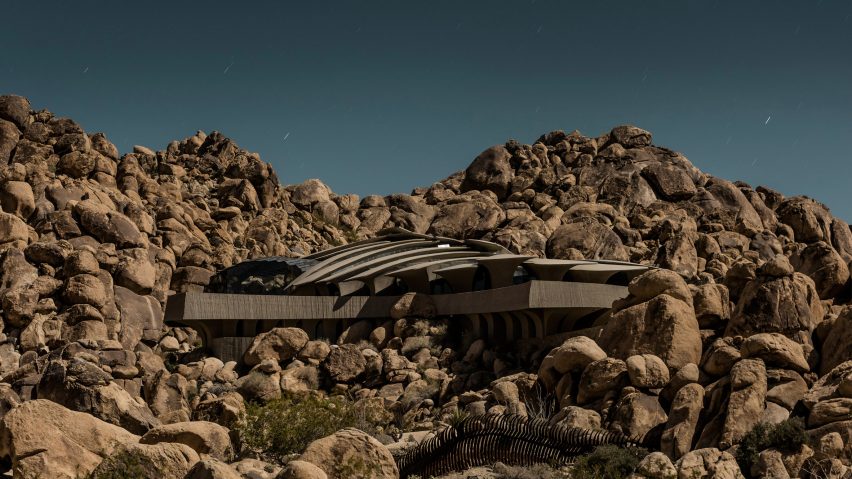
Tom Blachford expands Midnight Modern architecture photo series
Modernist buildings bathed in moonlight are the subject of Australian photographer Tom Blachford's updated image series, which goes on show in New York this week.
The fourth and final set of Midnight Modern photos includes 12 large-scale images, all taken under the light of a full moon using long exposure times.
Icons like the Sheats-Goldstein residence and the Doolittle House are among the projects depicted in the collection, presented as an exhibition at Toth Gallery in Manhattan's Lower East Side neighbourhood.
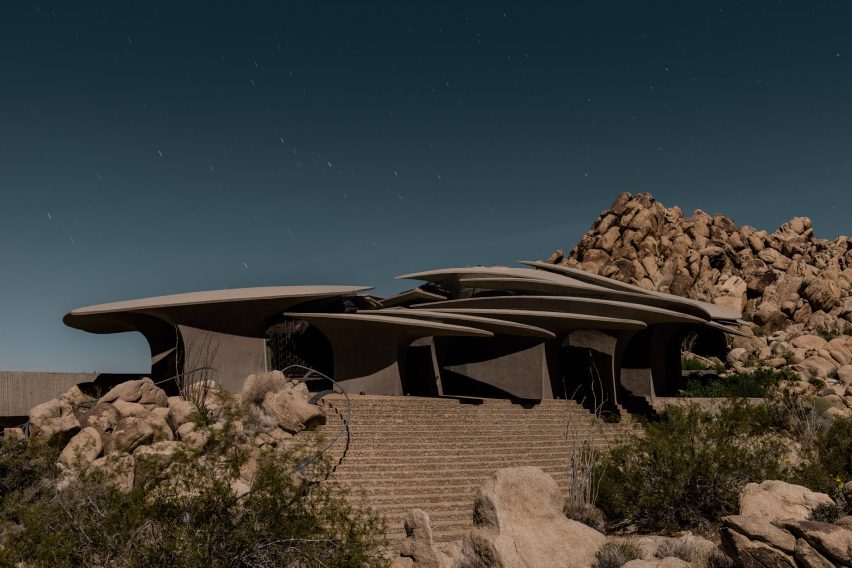
"Blachford's series is a surreal ode to the landscapes of California and its cache of pristine modernist buildings," said a statement on behalf of the photographer.
In this latest set, Blachford ventured beyond Palm Springs and strayed away from the mid-century timeframe that he previously stuck too.
This allowed him to capture buildings like architect John Lautner's Sheats-Goldstein residence high up in the hills above Los Angeles.
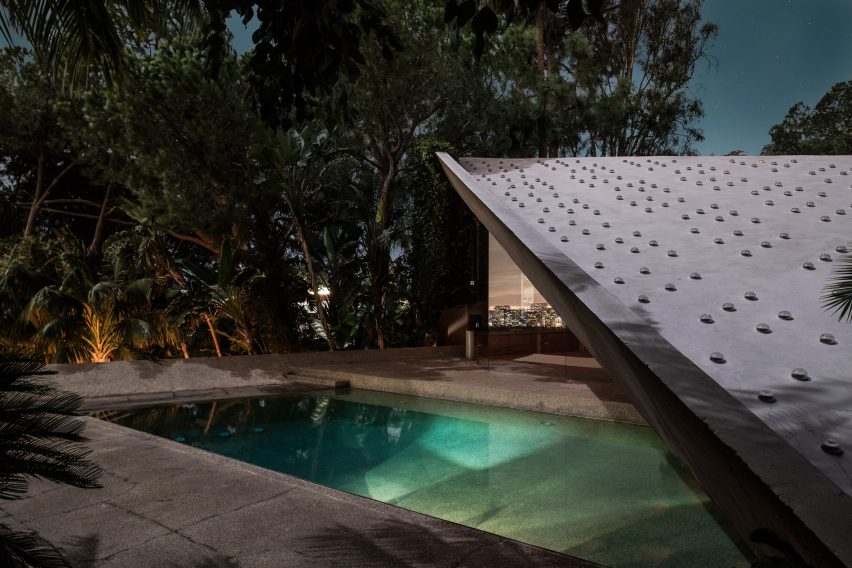
Featuring a distinctive angular roof patterned with a grid of triangular indents, the house was originally built in 1963 for Helen and Paul Sheats, then acquired by art collector James Goldstein in 1972.
It famously appeared in 1998 cult movie The Big Lebowski as the home of a pornography mogul. Goldstein donated the building to the Los Angeles County Museum of Art in February 2016.
Another recognisable structure in Blachford's updated series is the Doolittle House in Joshua Tree by Kendrick Bangs Kellogg.
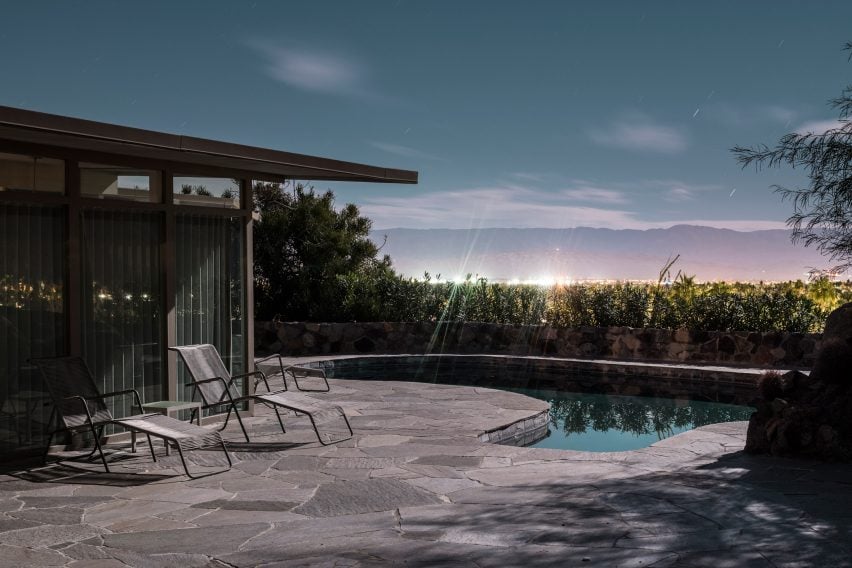
Frequently likened to a Bond villain's lair, the residence is covered with overlapping concrete petals that appear to emerge from the desert landscape, and conjure images of prehistoric animal shells.
Bangs-Kellogg completed the home in 1993 for artists Bev and Jay Doolittle, who put it up for sale in 2014. The house was purchased by interior designer Kristopher Dukes and Facebook executive Matthew Jacobson, who intend to preserve its unique architecture.
Keeping with contemporary designs, Blachford shot The Black Desert House by Oller and Pejic, completed in the Mojave in 2014. The husband-and-wife team designed the house for themselves, with the intention to make it appear "like a shadow" on the rocky terrain.
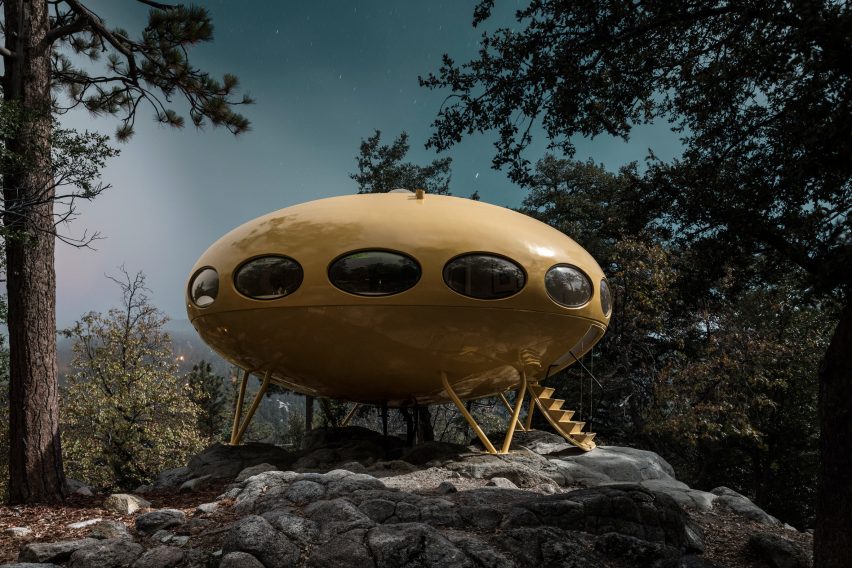
One of Matti Suuronen's capsule-shaped Futuro Houses, coloured bright yellow, also appears in the series. Less than 100 of these prefabricated, fibreglass homes were constructed during the 1960s and 1970s, so they became collectible items scattered around the world.
Raised off the ground on thin supports, their designs include ellipse porthole-like windows and a hatch that doubles as steps required to climb inside.
Vintage cars appear in several of the photos, including a Mercedes parked beside an austere white house by Jim Jennings Architecture, a Dodge in front of a stone-faced residence in Palm Springs' Deepwell Estates, and a pale yellow model outside E Stewart Williams' Edris House.
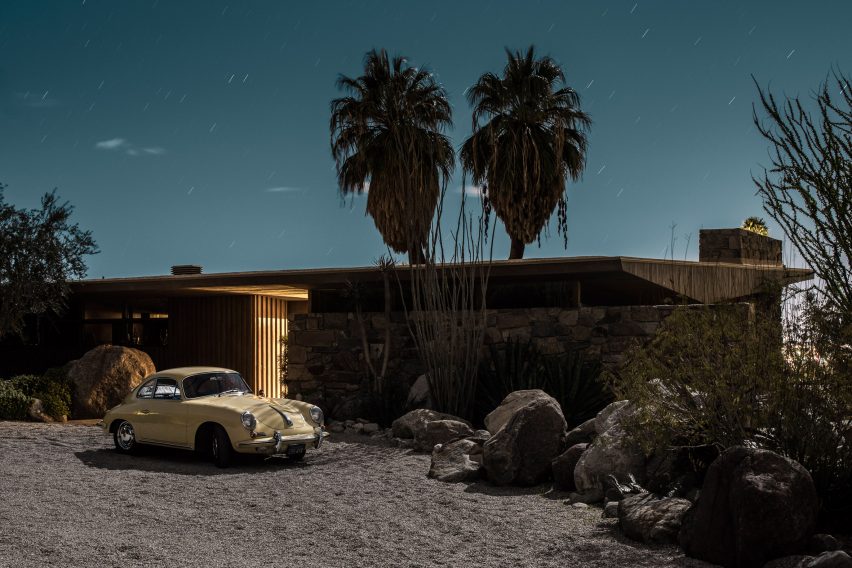
"Shot entirely at night, bathed in moonlight, the homes, vintage cars, and foliage appear as they have been captured in another space and time," said the statement. "Recognising the locations may be easy, but it is more difficult to identity when the image was actually taken, be this day or night, in the past, present, or future."
Blachford began his Midnight Modern with mid-century buildings in modernist mecca Palm Springs, like the Kaufmann Desert House and Frank Sinatra's Twin Palms Estate, which he captured using the same technique.
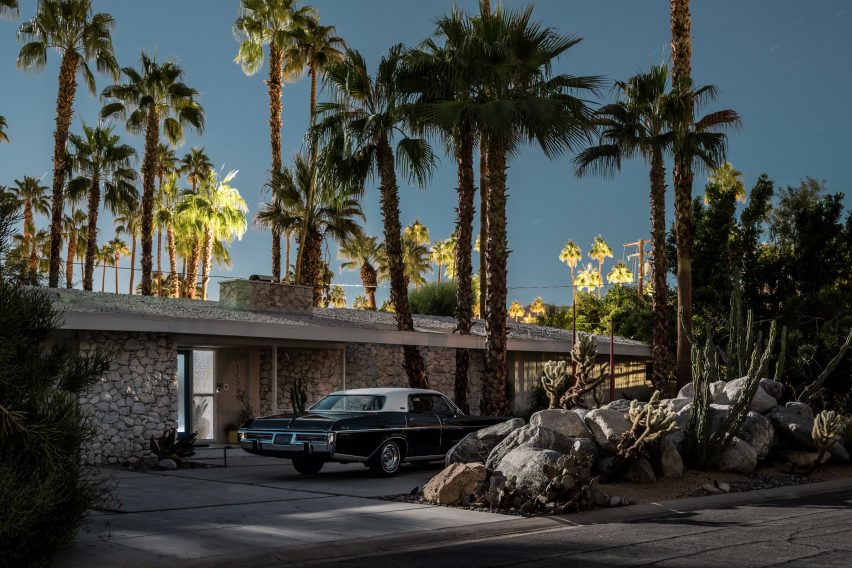
"California has a unique geography and climate, and this gives rise to a distinct deep blue sky: a hue of moonlight ideal for this approach to architectural photography," the statement said. "The long exposure allows the camera to capture a world just beyond our perception and distil it into a single moment."
Midnight Modern IV is open to the public 19 October to 4 November 2018 at Toth Gallery, 195 Chrystie Street.
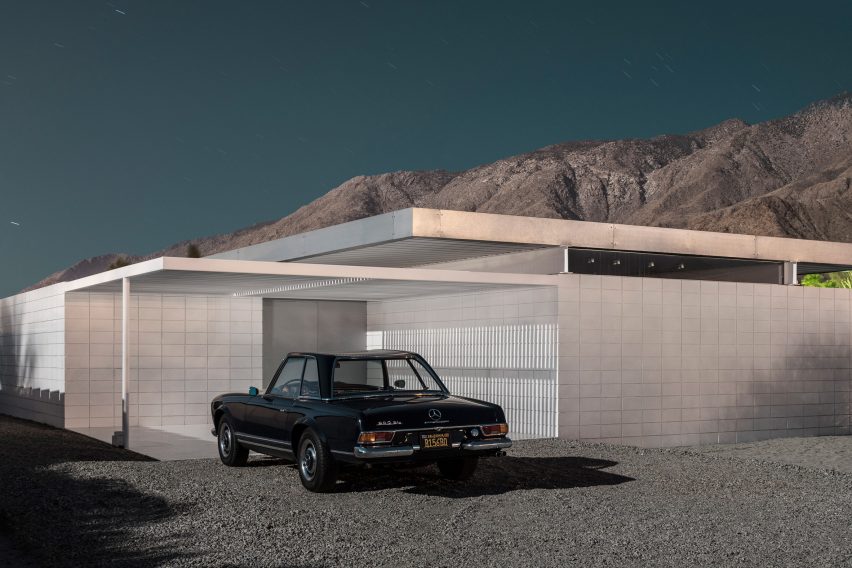
Modernist architecture provides a constant source of inspiration for photographers, who use a wide variety of techniques to portray the style in different ways.
Following Julius Schulman's documentation of California's mid-century architecture during the 1950s and 1960s, recent interpretations have included Stephanie Kloss' images that show the structures in muted pastel tones, and Kate Ballis' infrared imaging that portrays modernism in lurid pink and purple hues.